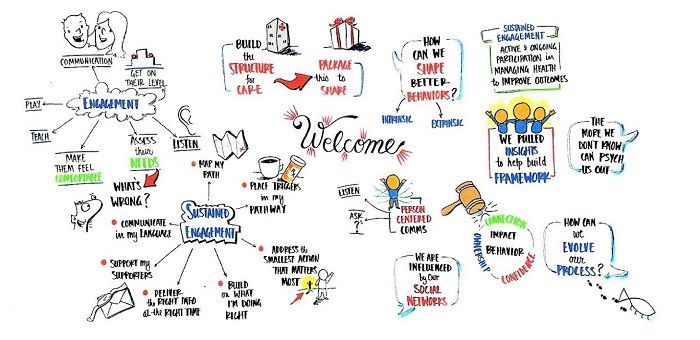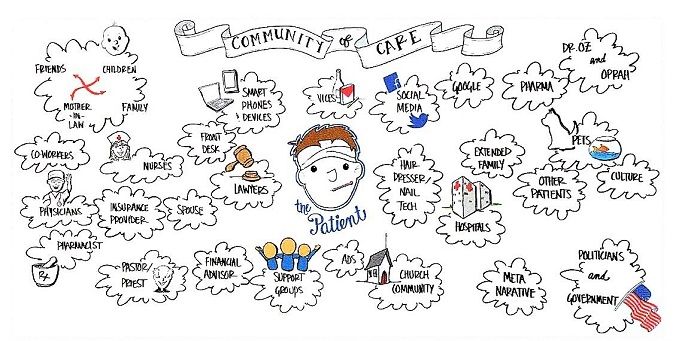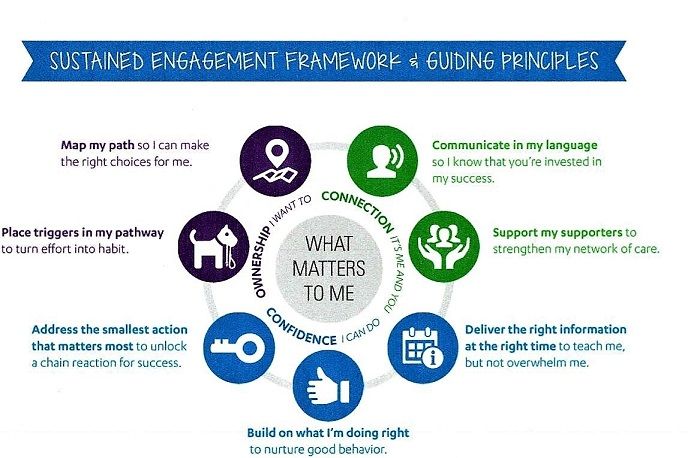- Center on Health Equity & Access
- Clinical
- Health Care Cost
- Health Care Delivery
- Insurance
- Policy
- Technology
- Value-Based Care
Roadmap to Success in the Oncology Care Model: Tapping Into Human Potential via Sustained Engagement
The authors, led by Kashyap Patel, MD, offer the first in a series of articles on how Carolina Blood and Cancer Care Associates leveraged the strength of its team to take part in the Oncology Care Model.
The US healthcare system is in a state of crisis. Despite spending the highest amount on individual health in the world, the United States ranked at the bottom of the 17 most developed nations in outcomes, according to a 2017 Commonwealth Fund report.1 In 2013, the Institute of Medicine (IOM) described US healthcare as achieving “poorer health and shorter lives.”2 As healthcare spending rises, patients do not see any significant corresponding gains in either lifespan or life quality. Medicare’s fee-for-service (FFS) model remains common in the United States; under this payment system, medical services are not bundled but instead are paid for individually, thus creating incentives to offer high-quantity (but not necessarily high-quality) healthcare. To improve outcomes and patient experience, Congress in 2015 began the transition from volume to value under the Medicare Access and CHIP reauthorization Act, or MACRA.3 One of the primary goals of MACRA is to encourage the shift from FFS to value-based care (VBC). With the passage of MACRA, the fundamental concept of VBC programs is to reward healthcare providers with incentive payments for improving the quality of care they provide to Medicare beneficiaries. In the future, CMS plans to tie payment to measured performance in oncology care.4
In June 2016, the CMS launched a new, voluntary Oncology Care Model (OCM).5,6 The program aims to improve cancer care delivery by providing higher quality, more coordinated care to Medicare beneficiaries at the same or lower cost than under traditional FFS structures. The OCM program ties payments to provider performance based on meeting specified quality metrics and practice reforms. The program began in 2017 and will run through 2022. In July 2017, 192 practices and 14 commercial payers were participating in the OCM. The OCM incorporates a 2-part payment system for physician practices: a per-beneficiary Monthly Enhanced Oncology Services (MEOS) payment and a performance-based incentive payment.7 The MEOS payment assists participating practices in effectively managing and coordinating episodes of care for oncology patients. The performance-based incentive payment is calculated retrospectively on a semiannual basis, based on the practice’s achievements in quality measures and reductions in Medicare expenditures.
Our practice with 5 medical oncologists had been making the transition into patient-centered specialty practice accreditation around the same time that Center for Medicaid and Medicare Innovation (CMMI) announced the request for applications to enroll in OCM. After reviewing the requirements and financial logistics, we decided to apply for enrollment in the OCM. Along with preparing our application, we began mobilizing resources and preparing for a quick transition into the OCM if accepted.
Upon review of the OCM implementation requirements, we realized that the guidelines might be overly burdensome, even undoable. However, we also knew our biggest asset: a very dedicated and flexible pool of employees. We learned that teams offer the potential to achieve more than any person could achieve working alone; yet, particularly in teams that span professional boundaries, it is critical to capitalize on the variety of knowledge, skills, and abilities available. Rather than simply informing our employees of the new model, we tapped into this human potential. We brainstormed how these different staff members in different roles could effectively coordinate and collaborate. It became clear that each person had certain strengths that others might not possess; together, those individual strengths would come together to make for a smooth transition, each person would complement others to offer exponential returns to improve quality. The most important strategy to succeed in shifting from volume to value was to build a very effective and cohesive team, in which each person becomes a stakeholder rather than a follower who await commands from the general.
Collaboration, communication, and engagement were critical aspects to successful implementation of this project at Carolina Blood and Cancer Care. Prior to the start of implementation, a series of team building activities were held to ensure that all stakeholders were aware of workflow changes that would come from implementation of OCM. Without successfully changing the mindset within our practice—from physicians, to nurses, to medical assistants, to front desk staff—our implementation would have failed.
The first major activity we implemented was education of all employees in weekly meetings and provide a nurturing, caring and collaborative working environment. We wanted our employees to understand that the fundamentals of the transition were about patient care and not about another bureaucratic endeavor.
Second, and perhaps the most rewarding and fun experience was to carry out a sustained engagement (SE) work shop (Figure 1). We spent one day with an expert team building coach to help facilitate brainstorming to understand the triple aim of reducing cost, improving patient experience, and improving outcomes via implementation of patient centered cancer care (PCCC).

In the first quarter of the workshop, we summarized issues in our then current delivery system including siloed care, lack of care coordination, no patient engagement, and wasteful expenditures in terms of redundancy and repetition of tests. We also learned the value of sustained engagement in improvement of care delivery to the patient-centered care (PCC).
In the second quarter of the workshop, we asked employees to come up with ideas regarding the best way to implement IOM care plan (Figure 2). Our team came up with ideas to offer integrative, palliative, and spiritual care in house.

The third quarter of the SE workshop (Figure 3) focused on creation of a community of care that included ways and means to transition to patient-centered care. We reached a consensus of necessary steps required to create a compassionate commuity of care revolving around the patient. These included patient navigation, pathways, same-day appointments, financial assistance, and care coordination.

In the last quarter, we concluded with a session that summarized our learnings into 6 different domains, which focused on how each employee can modify their role to provide the best care to our patients (Figure 4). We ended with a discussion of anyone’s hesitations with the changes to be made, and addressed ways to ensure that each member of the team felt comfortable with the new goals and policies.

This SE workshop took place in June 2016, just 1 month before implemenation of OCM began. We identified core areas of practice transformation to lead us into a true patient-centered practice. Our philosophy rested on the foundation that there were “low hanging fruit” that were frequently ignored. We also decided to take a leap of faith into focusing on expanded access, care coordination, patient engagement, and a shared decision making process. Our nurses became certified as patient navigators to assist with care coordination. Alongside our standard implementation, staff members also became designated as financial counselors for underinsured or uninsured patients. They would specialize in finding grant assistance or drug replacement assistance to ensure that patients would receive the treatments they needed.
After our first successful workshop, we decided to continue having team building exercises in the form of semiannual weekend retreats. These retreats would be a time for staff members to wind down and relax, but also share and review performance of the clinic and strategize for the next 6 months. Although we are still in the process of computing and compiling the results of this OCM implementation, we are proud to say that not a single patient had to be turned away from Carolina Blood and Cancer Care Associates due to financial hardship. We raised over $1.5 million from multiple foundations to cover patient care at our clinic within the first year of OCM implementation.
Implementing collective ownership of a health improvement strategy and developing an idea of stewardship for individual healthcare and trusteeship of collective healthcare to reduce overall expenses while aiming to improve individual health is a feasible option. Moving out of performance-driven criteria on an individual basis to a team-based approach is definitely possible and can fulfill the triple aim. Teamwork offers the promise to improve clinical care because such an approach can aggregate, modify, combine, and apply a greater amount and variety of knowledge to facilitate PCCC, improve care coordination, and reduce communication barriers leading to expanded access with patient involvement in shared decision making. These strategies can solve problems, generate ideas, and execute tasks more effectively and efficiently than any individual working alone in siloed, fragmented, and compartmentalized fashion.
There is untapped potential within a multidisciplinary team of healthcare professionals, even in a small community clinic. Compartmentalized care frequently results in increased errors and poor quality of healthcare delivery system8.
We also learned that a complex alternate payment model (APM) like OCM requires a clear understanding of how to work across territorial boundaries and compartments of job descriptions. It is also worth noting that with high stakes for meeting targets in APM, working together is of paramount importance. Leadership should actively invite input to ensure that team members voice all of their concerns and share their creative ideas. Leaders should also be role models in expressing appreciation for diverse knowledge from all. We also learned that organizational behavior to shed light on group structures and processes that facilitate the use of in house expertise for more effective care coordination, execution of tasks, creativity, and overall team performance. We also realized what it means to build and have a collectively intelligent team: one with the capability to perform well consistently across a range of tasks.9 In doing so, we drew a transition from smart people on a team and to the creation of smart teams. We laid the groundwork for creating smart teams, which enabled us for more efficient transition from volume to value.
Next: We will share information on what we have learned from implementing this sustained engagement work shop
Author Information.
Dr Kashyap Patel, Maharshi Patel, Dhwani Mehta, Dr Sashi Naidu, and Dr Asutosh Gor are with the Carolina Blood and Cancer Care Associates of Rock Hill South Carolina. Radhika Kothadia is with East Carolina University’s Brody School of Medicine in Greenville, North Carolina.
1. Gulland A. UK has the best health system in the developed world, US analysis concludes. BMJ. 2017;358:j3442. doi.org/10.1136/bmj.j3442.
2. Woolf SH, Aron L, editors. US health in international perspective: shorter lives, poorer health.National Research Council; Institute of Medicine; 2013.
3. CMS announces additional opportunities for clinicians to join innovative care approaches under the Quality Payment Program [press release]. Washington DC: CMS Newsroom; October 25, 2016. cms.gov/newsroom/press-releases/cms-announces-additional-opportunities-clinicians-join-innovative-care-approaches-under-quality. Accessed December 10, 2018.
4. Clough JD, Kamal AH. Oncology care model: short- and long-term considerations in the context of broader payment reform. J Oncol Pract. 2015;11(4):319—321. doi: 10.1200/JOP.2015.005777.
5. Oncology Care Model. CMS website. innovation.cms.gov/initiatives/oncology-care/. Updated December 21, 2017. Accessed December 10, 2018.
6. Oncology Care Model Fact Sheet. CMS website. cms.gov/newsroom/fact-sheets/oncology-care-model. Published June 29, 2016. Accessed December 10, 2018.
7. Oncology Care Model Key Drivers and Change Package. CMS website. https://innovation.cms.gov/Files/x/ocm-keydrivers-changepkg.pdf?rel=0" ?rel=0" . Published August 4, 2016. Accessed November 28, 2018.
8. Committee on Quality of Health Care in America. Crossing the Quality Chasm: A New Health System for the 21st Century. Washington, DC: National Academies Press; 2001. nationalacademies.org/hmd/~/media/Files/Report%20Files/2001/Crossing-the-Quality-Chasm/Quality%20Chasm%202001%20%20report%20brief.pdf.
9. Woolley AW, Chabris CF, Pentland A, Hashmi N, Malone TW. Evidence for a collective intelligence factor in the performance of human groups. Science. 2010;330(6004):686-688. doi: 10.1126/science.1193147.
References
